Nikon Z8 vs Canon EOS R5
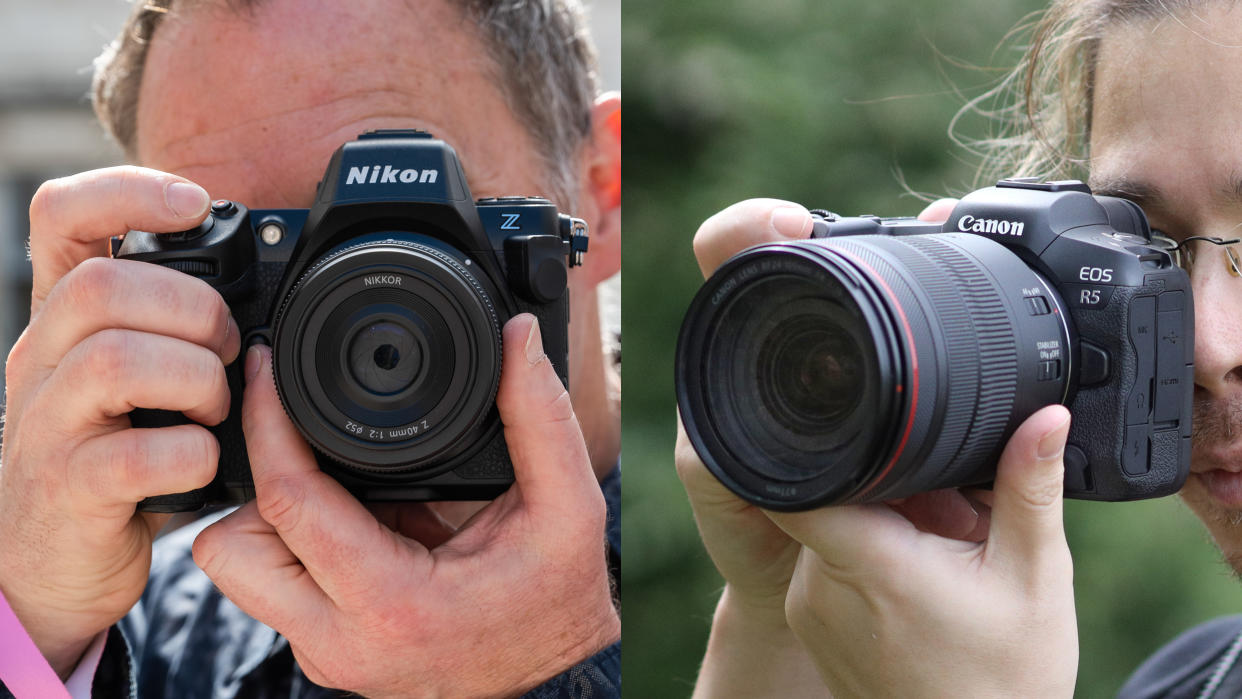
While Canon announced the EOS R5 in July 2020, the Nikon Z8 is much more recent and was announced in May 2023. Both cameras sit below their manufacturer’s flagship cameras, the EOS R3 in the case of the R5 and the Z9 for the Nikon Z8. Consequently, they each have a very impressive feature set with plenty to tempt serious enthusiast and professional photographers alike. In this post, we’ll compare the Nikon Z8 with the Canon EOS R5 to identify their key similarities and differences.
1. Sensor
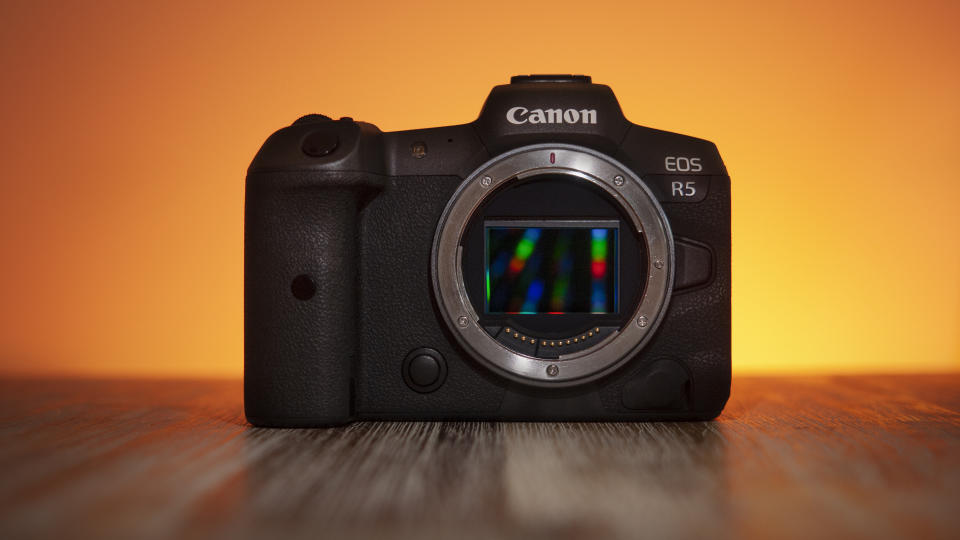
Nikon Z8: Full-frame (FX 35.9 x 23.9mm) 45.7MP stacked backside illuminated (BSI) sensor
Canon EOS R5: Full-frame (36x24mm) 45MP CMOS
While the two cameras have a very similar pixel count, the Nikon Z8 has a more advanced sensor design. Its stacked backside-illuminated (BSI) structure enables faster read-out speeds, in fact, according to Nikon, the Z8 has the fastest read-out speed of any camera currently available. This gives it an advantage for issues like rolling shutter, autofocusing and continuous shooting.
Nikon pairs the Z8’s sensor with the Expeed 7 processor while the R5 has one of Canon’s Digic X processing engines. In the Z8, the sensor and processor combo enables a standard ISO range of 64 to 25,600 with expansion settings taking the range to ISO 32 to 102,400. With the Canon R5 the native range is ISO 100-51,200 while the expanded range is ISO 50 to 102,400.
2. Continuous shooting
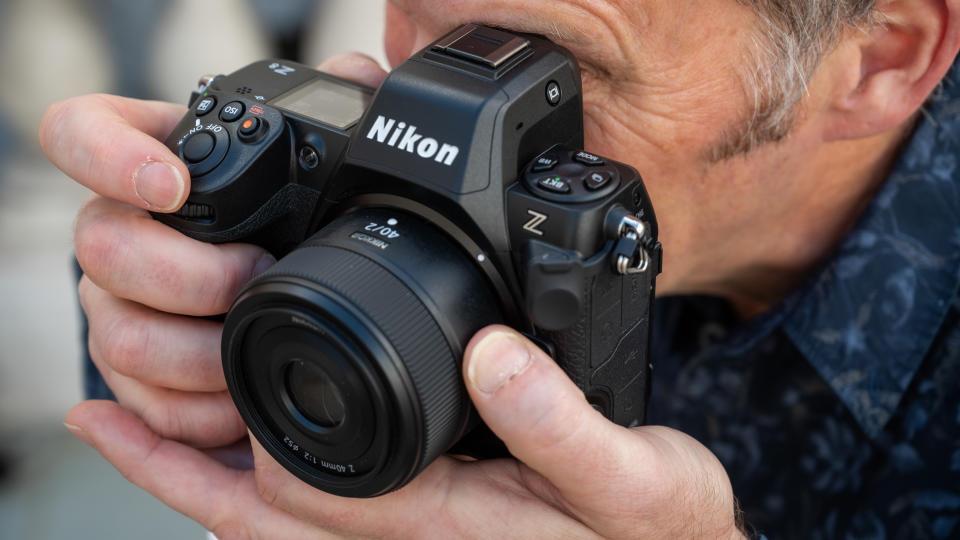
Nikon Z8: 20fps for up to 1000+ raw (high efficiency) files, 30fps for up to 1000+ normal-quality Jpegs, or 120fps normal-quality 11Mp Jpegs
Canon EOS R5: Mechanical shutter: 12fps, Electronic shutter: 20fps for up to 350 Jpeg or 180 raw images
While the Canon R5 has a mechanical and an electronic shutter, the Nikon Z8 only has an electronic shutter. When its electronic shutter is in use, the Canon R5 can match the Z8’s 20fps continuous-shooting capability, but its burst depth falls well-short of the Nikon camera’s at just 180 raw files.
If you’re happy to switch to shooting normal-quality Jpegs, the Z8 can muster 30fps when capturing full-resolution files and 120fps when the pixel count is dropped to 11MP.
The Z8’s blistering shooting rate is matched by an impressive to shutter speed of 1/32,000 sec while the Canon R5 has a top speed of 1/8,000sec.
3. Video
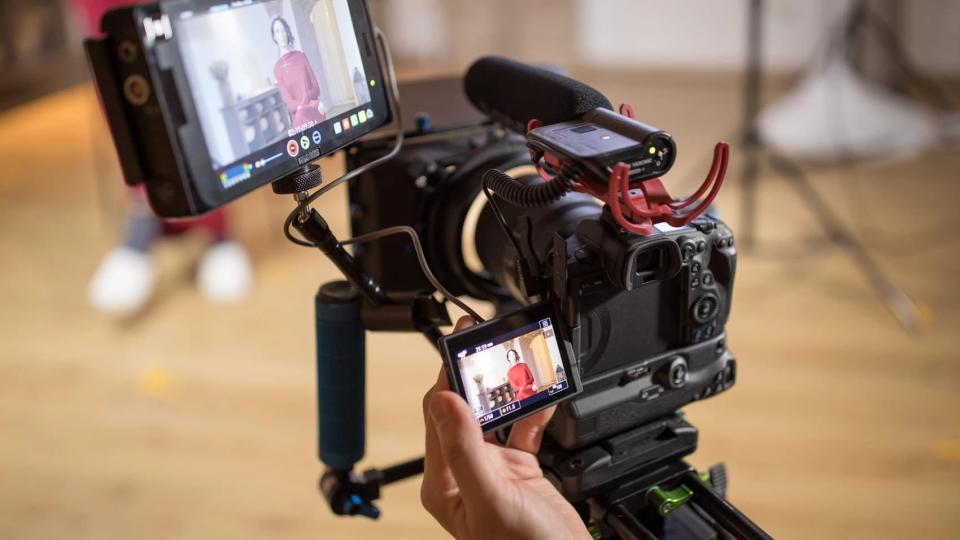
Nikon Z8: 8K (7680 x 4320): 60p/30p/25p/24p, 4K (3840 x 2160): 120p/100p/60p/50p/30p/25p/24p, Full HD (1920 x 1080): 120p/100p/60p/50p/30p/25p/24p
Canon EOS R5: 8K (8192 x 4320 or 7680 x 4320): 29.97, 25, 24, 23.98 fps, 4K (4096 x 2160 or 3840 x 2160): 119.9, 100, 59.94, 50, 29.97, 25, 24, 23.98 fps, Full HD (1920 x 1080): 119.9, 100, 59.94, 50, 29.97, 25, 23.98 fps
Both cameras offer internal 8K video recording but the Nikon Z8 can push the frame rate to 60p while the Canon R5 is limited to 30p. Drop the resolution to 4K, however, and both cameras offer 120p recording.
You also get 4:2:2 10-bit colour support when recording ProRes 422 HQ and H.265 codecs with the Z8. Meanwhile the R5 offers 4:2:2 10-bit Canon Log (H.265) or 4:2:2 10-bit HDR PQ (H.265) capability.
Another significant advantage of the Z8 is that it can record 8K 30p footage for up to 90 minutes and 4K 60p footage for over two hours while overheating limits the R5 to around 20 minutes.
4. Autofocus
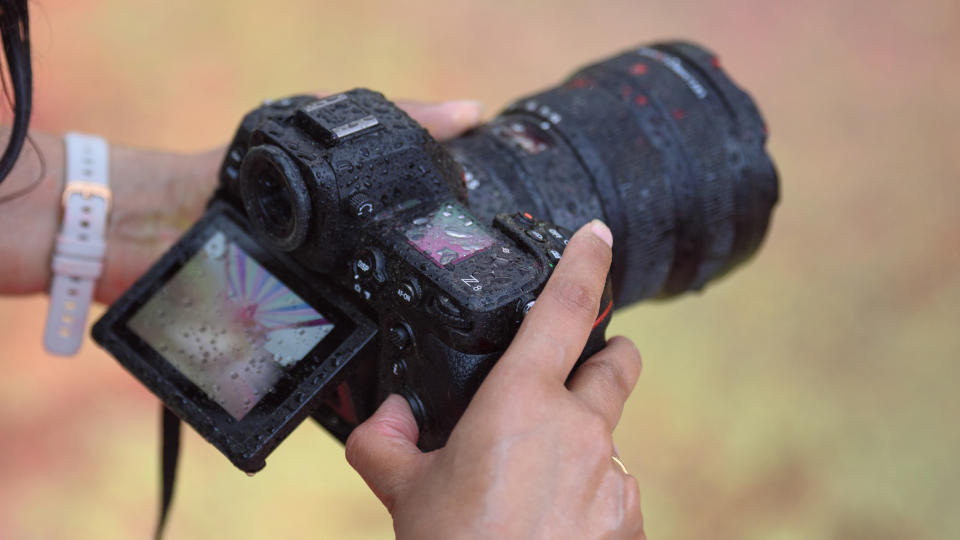
Nikon Z8: Hybrid with 493 phase-detection points and subject detection
Canon EOS R5: Dual Pixel CMOS AF II with 5,940 phase-detection points and subject detection
The Nikon Z8 and Canon R5 both have phase detection focusing across the whole image frame, but the R5 has significantly more points. However, the Z8 has the R5 beaten with regards to its low light capability as it’s sensitive down to -9EV in Starlight mode. The R5 can operate at down to -6EV.
The two camera also feature subject detection AF and cover a similar range of subjects. With the Z8, the list comprises people (eyes, faces, head and torso), animals (whole bodies and heads and eyes for cats, dogs, birds and ‘other animals’), cars, motorbikes, bicycles, trains and aeroplanes. Interestingly, cars, motorbikes, bicycles and trains are grouped together and aeroplanes get their own category with the camera able to detect the whole craft, the front of the ’plane or the cockpit. Meanwhile, the R5’s subject detection list includes humans, animals (cats, dogs and birds) and vehicles (racing cars and motor bikes).
5. Viewfinder and screen
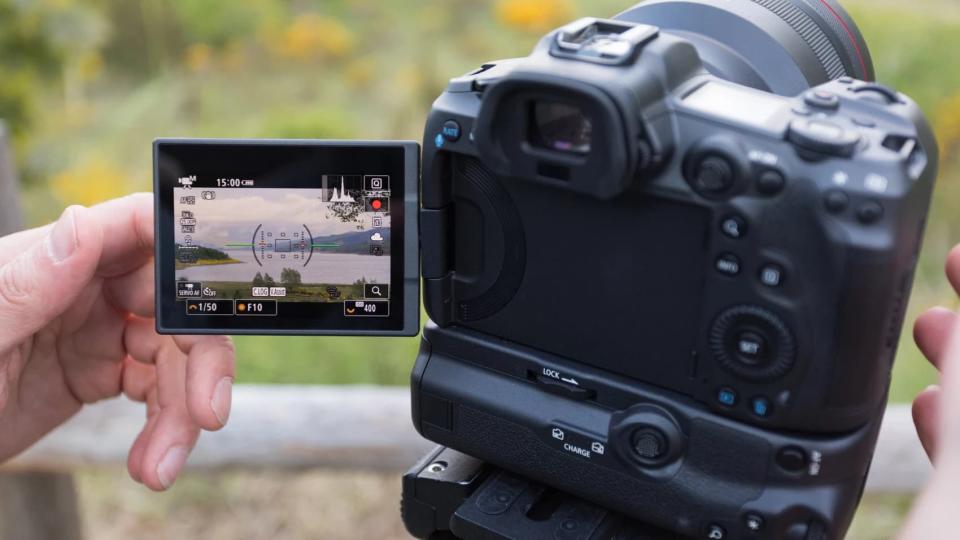
Nikon Z8: 0.5-inch 3.69-million-dot OLED viewfinder, 3.2-inch 2.1-million dot 4-way-tilting touch-screen
Canon EOS R5: 0.5-inch 5.76-million-dot OLED electronic viewfinder, 3.15-inch 2.1-million dot vari-angle touchscreen
Although they have the same size viewfinder, the R5’s EVF has a much higher dot count which gives images a more natural appearance with greater detail. There’s less to separate the screens on the back of the camera, however, and the biggest difference between them is that the Z8’s monitor has a 4-way tilting mechanism while the R5 has a vari-angle screen. The Z8’s tilting mechanism works very well and feels robust, but it can’t be flipped to face forwards for vlogging. The R5’s screen can be flipped out and rotated to face forwards, but the mechanism doesn’t feel quite as durable as the Z8’s.
Both screens offer full touch-control and can be angled to give a clear view whether you’re shooting in landscape or portrait orientation.
6. Memory Cards
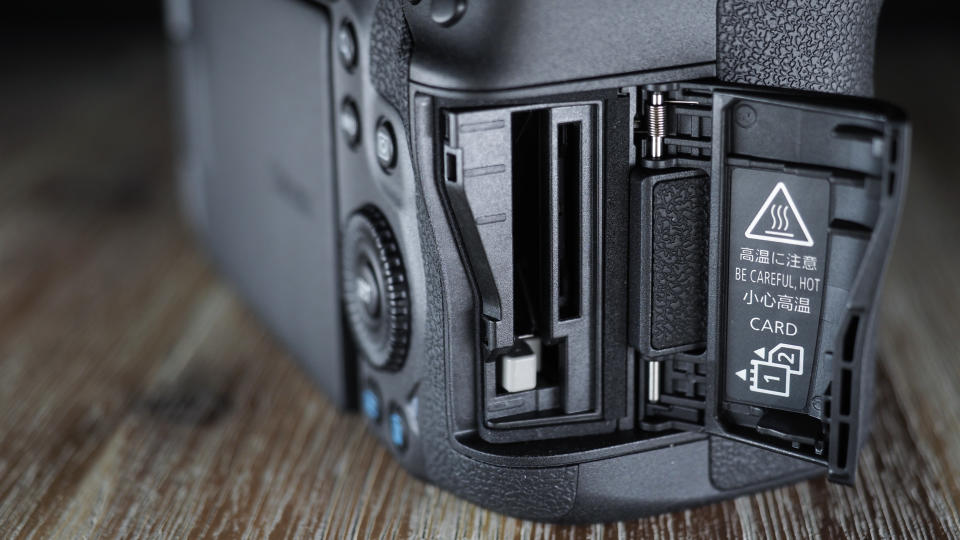
Nikon Z8: 1x CFexpress, 1x SD USH-II
Canon EOS R5: 1x CFexpress, 1x SD USH-II
Canon and Nikon have adopted the same approach for the memory cards and both the R5 and Z8 have two slots, one that accepts SD-type media and another that’s compatible with CFexpress cards. The CFexpress cards are required when recording 8K video and to enable the deepest burst depths when shooting continuously.
7. Battery life
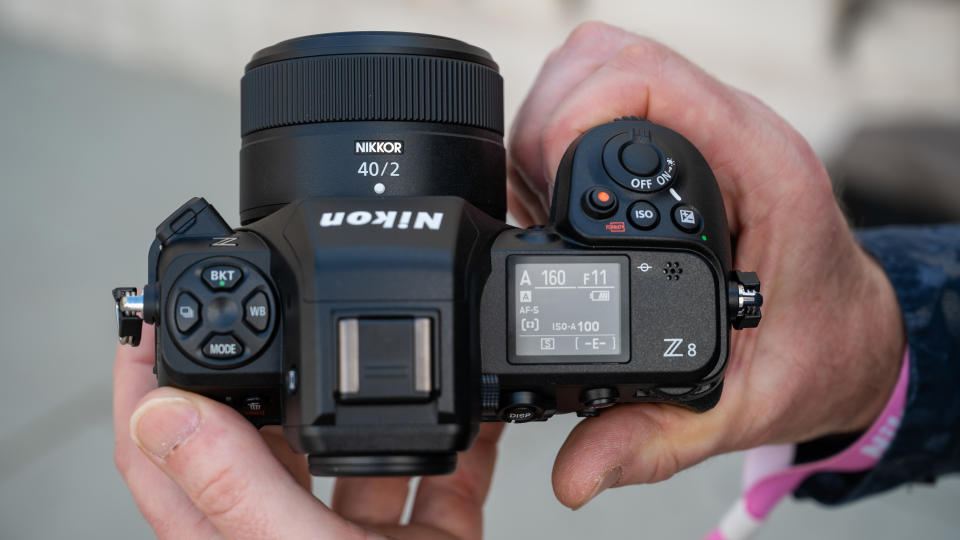
Nikon Z8: EN-EL15c - 340/370 shots when using the viewfinder/LCD
Canon EOS R5: LP-R6NH - 470/490 shots when using the viewfinder/LCD
Although you can expect to get more images on a single charge in real-world shooting with either camera, especially when shooting continuously, the Canon R5 wins the battery life contest. In truth, if you’re heading out for a day of photography or videography, you’re likely to want a couple of spare batteries whichever camera you opt for, but the R5’s battery last longer.
8. Nikon Z8 vs Canon EOS R5: Verdict
The Canon EOS R5 is an excellent camera that delivers very high quality images and video, but the Nikon Z8 inherits much of the technology of the Z9 above it in Nikon’s range and this gives it an edge, making it a little more versatile.
The two cameras are well-matched in resolution and autofocus capability, but the Z8 has better burst shooting and allows longer videos be shot without a break. The Nikon camera also brings 8K 60p video to the party, beating the R5’s 8K 30p maximum output. If you want a screen that can face forwards, or a viewfinder with super-high resolution, or you’re concerned about battery life, however, the Canon EOS R5 is the camera for you.

